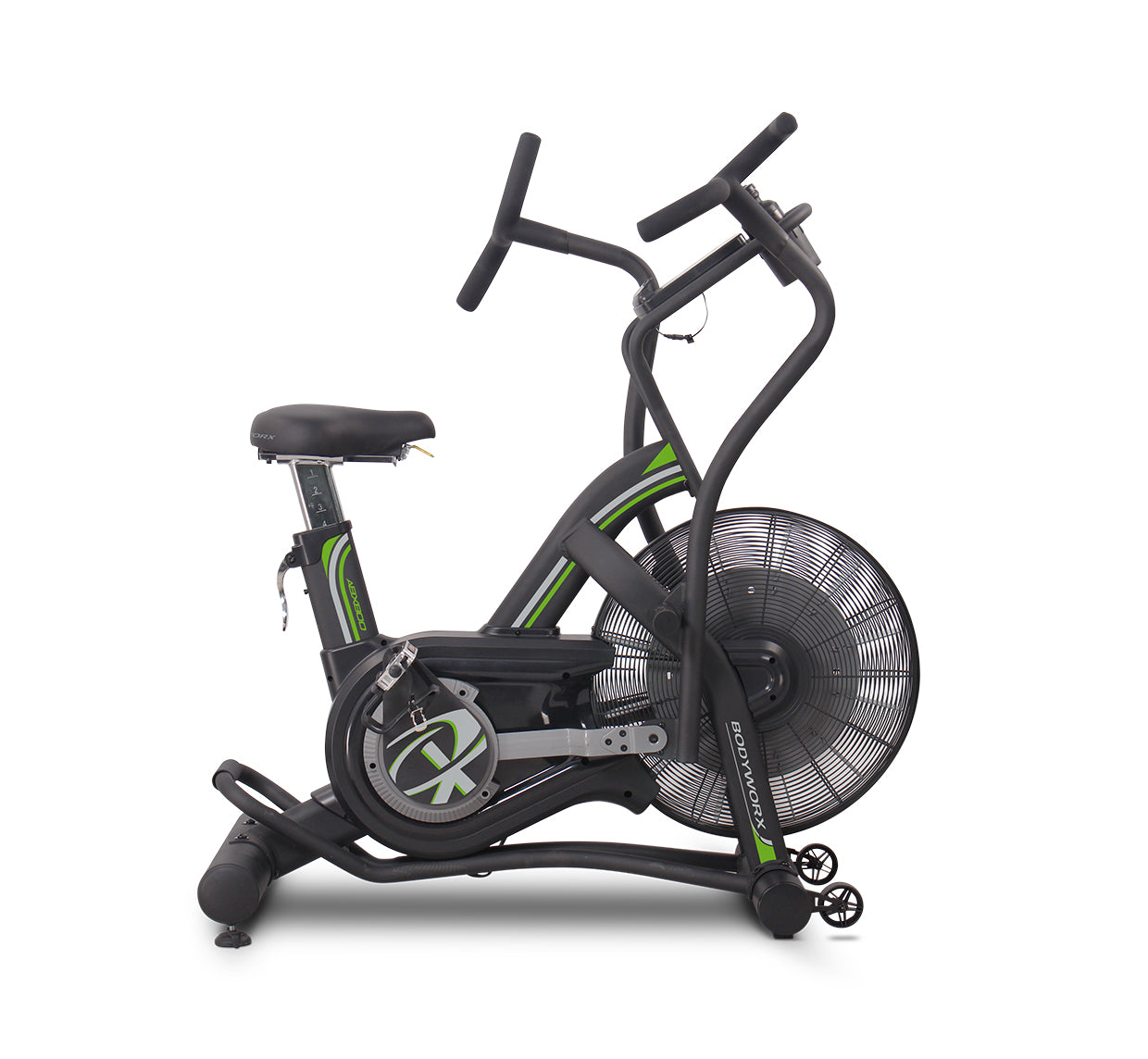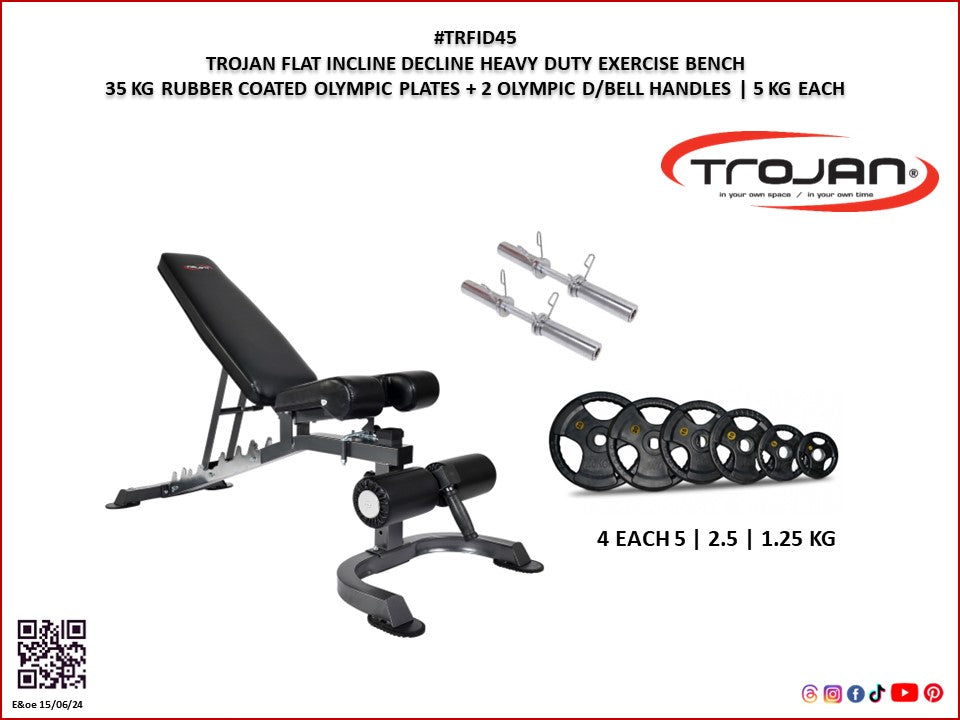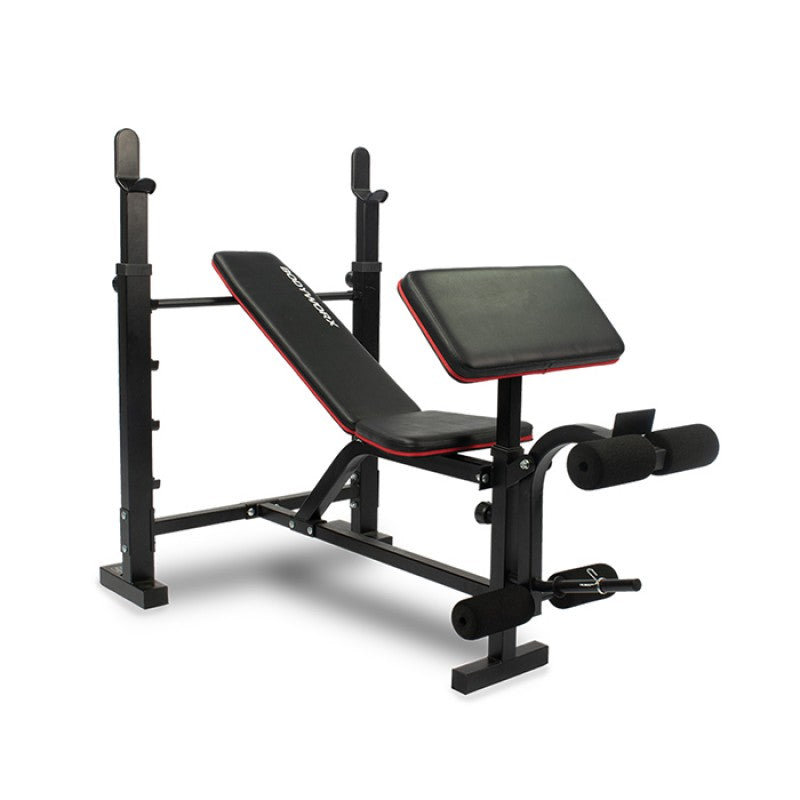So, you wanna build a chiselled chest that turns heads and makes T-shirts feel tight in all the right places? Well, mate, you’ve got two heavy hitters in your corner. The chest press and the bench press.
One is your reliable, no-nonsense gym buddy that keeps things controlled. While the other is that wild, free-spirited friend who makes you stronger but also makes you sweat a whole lot.
Both will give you pecs of steel. But you might be asking yourself ‘Which one builds stronger chest? Bench press or chest press?’ Trojan Fitness is here to clarify it once & for all.
In this guide, we’ll compare these two moves side by side, covering muscles worked, technique, pros/cons, equipment, and who should use which.
So, grab your lifting straps and let’s settle this chest-day debate.
What’s the Difference Between Bench Press and Chest Press?
(i) Bench Press
The bench press is a classic free-weight exercise done with a barbell or dumbbells while lying on a flat bench. It’s known for building upper-body strength and power.
(ii) Chest Press (Machine)
The chest press machine offers a guided path of motion for pressing weight forward while seated. It’s great for isolating the chest and ensuring safer form. It allows you to concentrate more on your pecs without worrying about balance or stabiliser muscles.
Understanding the muscles each exercise hits will help you decide which one suits your goals best. Let’s take a closer look.
Muscles Worked in Bench Press & Chest Press
(i) Which Muscles Do Bench Press Work?
It’s a compound movement that targets multiple muscles:
- Pectoralis Major & Minor (Chest Muscles): The primary movers responsible for pressing the weight.
- Triceps Brachii: Helps extend the elbows and lock out the movement.
- Anterior Deltoids (Front Shoulders): Assists in pushing the weight upward.
- Core Muscles: Engaged for stability, especially during heavier lifts.
- Latissimus Dorsi (Back Muscles): Provides control when lowering the barbell.
(ii) Which Muscles Do Chest Press Work?
Chest press focuses mainly on:
- Pectorals (Chest): Main target, like the bench press.
- Triceps: Helps with arm extension.
- Anterior Deltoids: Assists with pressing movement.
- Minimal Core Engagement: Since the machine controls stability, core activation is reduced.
Now that we know what these exercises are and which muscles they work, let’s explore how to do them properly, what you’ll need, and the benefits and drawbacks of each.
Bench Press vs. Chest Press | Techniques, Equipment Needed and Pros & Cons
Let’s start with the bench press, exploring how to do it, what gear you’ll need, and what makes it so effective or challenging.
Bench Press | How to Do it with Proper Form?

The bench press is a fundamental movement in strength training. It needs the following steps for proper execution and prevention of injuries.
- Lie flat on a bench with your feet planted firmly on the floor and shoulders pinned back.
- Grip the barbell just wider than shoulder-width.
- Unrack the bar and lower it slowly to your mid-chest (inhale as you lower).
- Then press it back up explosively (exhale) until your arms are fully extended.
Tip: Keep your elbows at about a 45° angle from your body for shoulder safety, and maintain a slight arch in your upper back.
Read more details about how to bench press with proper form
Equipment Needed for Bench Press
To get the most out of your bench press, here’s the gear you’ll need in your home gym or fitness centre.
(i) Flat or Adjustable Bench


It is essential for proper support needed during seated chest press or bench press. You can get our Flat Bench with Dumbbell Storage Rack for strength.
Or our Exercise HD Bench Incline Decline GT can give you better flexibility. Check Our collection of benches and choose the best for your need.
(ii) Barbell and Plates

They are standard equipment for a traditional bench press. For best results, choose our Olympic Barbell & Weights.
It consists:
- 135 Kg Pack of weights
- 20 Kg Olympic 7' 20 Kg Barbell
- Rubber Barbell Pad for better grip
- Pair Collars PU for protection
(iii) Dumbbells

For variations like the chest dumbbell bench press, you’ll need strong & durable dumbbells. You can explore our dumbbells collection and pick the ones that suit you best.
Pros of Bench Press
Benching in the gym allows more flexibility and push your body for more. Let’s talk about its chest-building benefits:
-
Builds Full-Body Strength & Stability
The bench press workout doesn’t just hit your chest. It activates your shoulders, triceps, core, and even legs for extra power and control.
-
Improves Athletic Performance
Because it mimics natural pushing movements. Athletes in sports like football, basketball, and combat sports benefit more from bench pressing at the gym than from machines.
-
More Versatile Than Machines
You can switch it up. Barbell bench press, dumbbells, or even a bench press with machine. Want to hit different angles? Adjust your grip or incline for a new challenge!
-
Better for Strength Gains & Muscle Growth
Because it recruits more muscle fibres, the bench press is king for overall chest development.
-
Customisable Grip & Range of Motion
Unlike machines that lock you into one position, dumbbells and barbells let you tweak your form to match your body structure and avoid injuries.
Cons of Bench Press
While doing bench press, beware of:
-
Higher Injury Risk if Done Incorrectly
Poor form can lead to shoulder impingement, wrist strain, or even pec tears. It’s important to learn proper technique before going heavy.
-
Requires a Spotter for Heavy Lifting
Unlike the seated bench, where you can simply re-rack the weight. The free-weight bench press can be dangerous without someone to help if you fail a rep.
-
Harder to Master
As it involves advanced & reckless technique, getting it right takes practice. Especially balancing a heavy barbell without wobbling is difficult.
Now that we’ve covered the bench press from every angle, let’s move on to the chest press and see how it differs from bench press.
How to Do Chest Press with Proper Form?

The machine bench press offers a guided & controlled movement for isolating chest muscles. Here’s how to do it right:
- Sit on the chest press machine.
- Adjust the seat so that the handles are at chest height.
- Grip the handles firmly.
- Keep your back against the pad and feet flat on the floor.
- Press the handles forward until your arms are almost straight (exhale)
- Then slowly let them return to the start position (inhale).
Tip: Avoid locking out your elbows completely to keep tension on the muscles, and keep a controlled tempo.
Read more about chest press exercise and explore how to get maximum benefits from it.
Equipment Needed for Chest Press
You don’t need a lot to get started with the chest press, but here’s what you’ll want for a solid workout.
(i) Chest Press Machine

It is the main equipment needed for any chest press variations. You can consider our Home Gym Inc 205 Lbs Stack Chest Press.
It offers:
- 94 kg/205 lb solid vinyl weight stack
- High & low pulley systems with attachments
- Adjustable butterfly and backrest pad
- Lockable password protector
- Butterfly reverse system for seated row
With the help of it, you can perform:
- Leg extension & curl
- Seated preacher curl
- Leg back kick
- Leg adductor strengthening
- Tricep push down
- Standing bicep curl
- Alternative: A Smith machine with bench can mimic a chest press in a home gym.
- Attachments: Some chest press stations include pulleys. Cables or resistance bands can add even more versatility if your machine has those features.
Explore all of our chest machines HERE.
Pros of Chest Press
If you're new to strength training. You should consider seated bench press to start before transitioning to free weights.
-
Beginner-Friendly & Easy to Learn
If you’re just starting out, the sitting chest press is your best friend. No balancing a heavy bar. No worrying about getting stuck under a failed rep. Just sit, push, and grow.
-
Safer for Joints & Reduces Injury Risk
Since the seated chest press follows a fixed path. There’s less strain on your shoulders and wrists compared to free weights. Plus, you can focus on muscle activation without stressing about improper form.
-
Perfect for Muscle Isolation
Want to laser-focus on bench press muscles worked (a.k.a. your pecs)? The machine bench press eliminates the need for stabilizer muscles. So, your chest does all the heavy lifting.
-
Great for High-Volume Training
Because of its stability, you can pump out more reps with heavier weights without worrying about losing control. This makes it perfect for burnout sets and hypertrophy training.
-
No Spotter Needed
Unlike a bench press workout, where a missed rep could mean getting pinned under the bar. The chest press lets you train solo safely.
Cons of Chest Press
Although great for stability, chest press has following limitations in advanced training.
-
Limited Range of Motion
Unlike the chest dumbbell bench press, which allows a deep stretch in the pecs, the machine keeps your movement locked into a specific range. Less stretch = less muscle fibre engagement.
-
Less Core & Stabilizer Muscle Activation
Since the machine provides support, your shoulders, triceps, and core don’t work as hard. This means you miss out on full-body strength benefits.
-
Not as Functional for Sports & Real-Life Strength
While great for muscle building, it doesn’t mimic real-world pushing movements better than bench press. Athletes benefit more from free-weight training.
-
Machine Dependency
If you always rely on a machine, transitioning to free weights can feel tough. Your muscles get used to assisted movement and get weaker in unsupported positions.
Now’ let’s have a look at side-by-side comparison of the bench press and chest press to help you decide which one best suits your goals.
Bench Press vs. Chest Press | Quick Comparison
|
Feature |
Bench Press |
Chest Press |
|
What It Is |
Free-weight exercise, lying on a flat bench |
Machine-based exercise with guided path, usually seated |
|
Equipment |
Flat/adjustable bench, barbell/dumbbells, weight plates |
Chest press machine, sometimes cables or attachments |
|
Muscles Worked |
Chest, triceps, shoulders, core, back stabilisers |
Chest, triceps, shoulders (minimal core/stabiliser involvement) |
|
Skill Level |
Intermediate to advanced |
Beginner-friendly |
|
Core & Stability |
High – engages stabilisers & core muscles for balance |
Low – machine supports stability, less core activation |
|
Injury Risk |
Higher if performed with poor form |
Lower because of safer path |
|
Strength & Muscle Gains |
Best for maximum strength & full-body engagement |
Great for chest isolation & hypertrophy training |
|
Ease of Use |
Harder to learn, more technique involved |
Easy to set up and execute; convenient for solo workouts |
So, Which Is Best? Chest Press or Bench Press?
Your choice depends on your goals and experience:
- Beginners: A seated chest press machine is safer and easier to control when learning.
- Building Strength: Barbell (or dumbbell) bench press is best for maxing out strength and heavy muscle gains.
- Chest Isolation: If you want to strictly target chest size, machines can burn it out with fewer stabilizers involved.
In practice, using both yields the best results. You might do bench presses one workout (for heavy strength) and chest presses another (for high reps and muscle detail).
Need benches for your own gym setup or doing chest press at home?
Level Up Your Chest Workouts with Trojan Fitness
At Trojan Fitness, we stock a range of bench press with machine setups, dumbbells, and benches. That can help you train on your own terms. With nationwide delivery and expert installation services. Setting up your dream home gym has never been easier.
So, no more waiting for a bench to get free at the gym.
Explore Our Strength Equipment and start lifting like a champ!
Disclaimer:
The information provided on this website is intended for general informational purposes only and should not be considered professional or medical advice. We make every effort to ensure the information provided is accurate and up-to-date, but we cannot guarantee the accuracy, completeness, or timeliness of the information. Any reliance you place on such information is strictly at your own risk. Always consult a qualified professional before making any significant changes to your diet, exercise routine, or lifestyle. We are not responsible for any adverse consequences resulting from the use of, or reliance on, any information provided on this website.
 All Payment Methods are Accepted
All Payment Methods are Accepted










